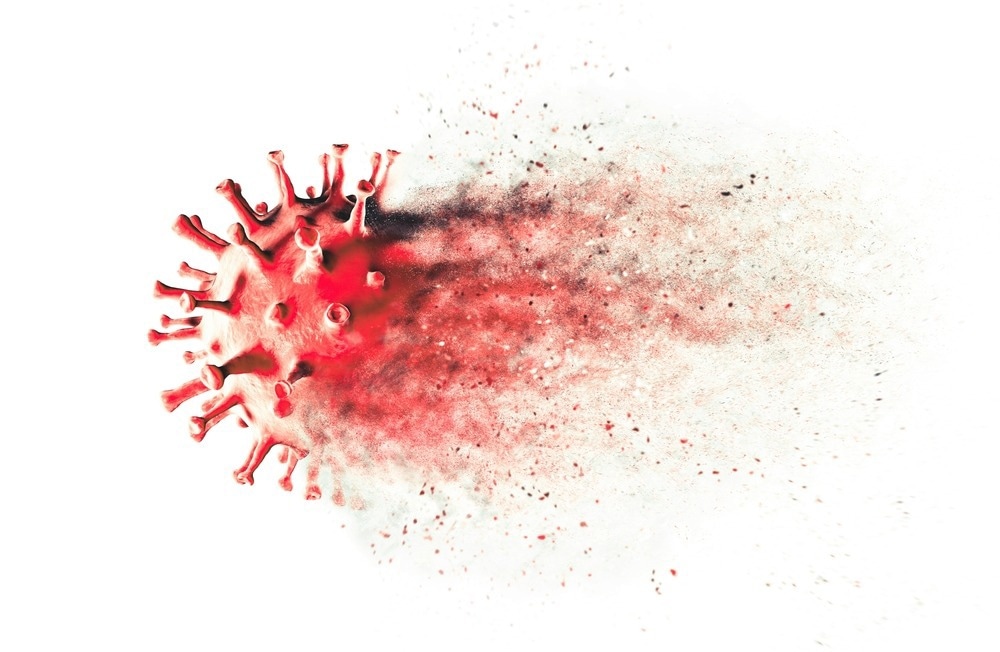Introduction
Have any Viral Diseases yet been Eradicated?
The Dahlem Workshop on the Eradication of Infectious Diseases
How to Define Eradication?
Viral Extinction and The Influenza Virus
Are There Measures in Place to Tackle Eradication?
References
Is it possible to completely eradicate a virus? Eradication is not easy to conceptualize and has been variously defined. Meanwhile, the concept of elimination has been dispensed with, only later to be revived again as virologists grapple with the intractability of a working definition for the concept of eradication. The concept of extinction is much more easily discernible, though surprising in its scope because, as we shall see here, the notion extends to common and longstanding viruses such as influenza.

Image Credit: Naeblys/Shutterstock.com
Have any Viral Diseases yet been Eradicated?
The eradication of disease has been deemed the “holy grail” for health officials, and better health positively impacts ecosystems across the globe (Corona, 2020). In the past, efforts to eradicate malaria, yellow fever, and yaws (which cause severe skin infection) were unsuccessful, though they fostered a better understanding of the complexities of disease control.
In 1993, the International Task Force for Disease Eradication assessed over 80 potential infectious disease categories, of which they designated just six as eradicable candidates (Dowdle, 1998). The World Health Organisation (WHO) has since then declared only two viruses to have been officially eradicated thus far; variola virus (VARV), which causes smallpox, and rinderpest virus (RPV), which causes rinderpest (also known as cattle plague).
The Dahlem Workshop on the Eradication of Infectious Diseases
The Dahlem Workshop on the Eradication of Infectious Diseases convened in March 1997. The workshop addressed critical questions about how to best define eradication according to specific biological criteria; the costs/benefits, the political and societal criteria for eradication, and how eradication programs were to be implemented. The various levels of effort in favor of disease control were defined at the workshop as follows (Dowdle, 1998; Quadros, 2002):
- Control: the reduction of disease incidence, prevalence, morbidity, and mortality to acceptable levels
- Elimination of disease: the reduction to zero incidences of disease in a defined geographic area
- Elimination of infection: reduction to zero incidences of infection caused by a specific agent in a defined geographic area
- Eradication: permanent reduction to zero worldwide incidences of infection caused by a specific agent
- Extinction: the specific agent no longer exists in nature or the laboratory.
The following year, a meeting was held in Atlanta, USA, whereupon the above definitions were again discussed. Here at the Conference on Global Disease Elimination and Eradication as Public Health Strategies, it was felt that because the terms eradication and elimination were interchangeable in many languages, the use of elimination itself should be eliminated, and subsequently, these categorizations were discontinued.
How to Define Eradication?
It is not easy to conceptualize eradication. If a definition of eradication were to include the term extinction, such a definition would prove problematic because both smallpox and rinderpest would not be considered eradicated. This is because samples of both viruses still exist. Stocks of VARV are to be found in the USA and Russia; meanwhile, there are samples of RPV in many facilities across the globe (Corona, 2020).
Another way to define eradication that the WHO and various other organizations have accepted is the “permanent reduction to zero of the worldwide incidences of infection caused by a specific agent as a result of deliberate efforts.” The definition better supports the cases of VARV and RPV, whereby the incidence of the former has not been seen since 1977 in Somalia and the latter since 2001 in Kenya (Corona, 2020).
The above definition is also rather narrow in scope; consequently, the WHO and other organizations have moved toward elimination rather than eradication. Here the incidence of disease does not need to be permanently reduced to zero globally for the definition to hold. Instead, a disease needs to be reduced to zero in a particular geographical locale.

Image Credit: pinkeyes/Shutterstock.com
Viral Extinction and The Influenza Virus
Virologists have discovered that in the case of persistent viruses that infect humans, such as the influenza virus, and contrary to expectation, individual lineages can peter out rather rapidly. There are two main types of influenza virus: A and B. Influenza A infects humans and animals such as aquatic birds. This type causes most seasonal flu cases and is responsible for initiating pandemics.
Meanwhile, influenza B infects humans ––and for some reason, seals are also susceptible––but never causes pandemics. It was widely thought that influenza A strains were constantly evolving and thus outcompeting the human immune system. But scientific research has now revealed this not to be the case.
In fact, it has now been discovered that influenza virus strains can go extinct. The strain that caused the 1918 influenza pandemic is no longer in existence. The one that led to the 1957 avian flu outbreak has also disappeared. Strains can abruptly go extinct after being replaced by viral strains that have evolved in nature.
There has been a significant worldwide reduction in influenza cases during the COVID-19 pandemic. This has involved both the A and B types. Influenza B (IBV) accounts for approximately one-quarter of cases, and yet the B/Yamagata lineage was not isolated during the period April 2020 to August 2021, and it has been postulated that the global prevalence of SARS-CoV-2 has precipitated the extinction of this lineage (Koutsakos, 2021).
Are There Measures in Place to Tackle Eradication?
The One Health initiative coordinated by the Centers for Disease Control (CDC) aims to tackle disease prevention, treatment, and eradication by integrating human health, animal health, and environmental factors. One Health considers the spread of disease concerning the following factors: climate change, global human migration into previously unpopulated areas, increased human-animal interaction, and human and animal migration per se.
References:
- Corona, A. 2020. Disease Eradication: What Does It Take to Wipe out a Disease? American Society for Microbiology. Online: https://asm.org/Articles/2020/March/Disease-Eradication-What-Does-It-Take-to-Wipe-out.
- Dowdle, W. et al (Eds.). 1998. The Eradication of Infectious Diseases. New York: John Wiley & Sons; 1998. Also Available Online: https://apps.who.int/iris/bitstream/handle/10665/260633/PMC2305684.pdf?sequence=1&isAllowed=y.
- Gorvett, Z. 2020. The deadly viruses that vanished without trace. BBC Future. Online: https://www.bbc.com/future/article/20200918-why-some-deadly-viruses-vanish-and-go-extinct.
- Koutsakos, M. et al. 2021. Influenza Lineage Extinction during the COVID-19 Pandemic? Nat Rev Microbiol. Doi: 10.1038/s41579-021-00642-4.
- Quadros, C. 2002. Considerations for Viral Disease Eradication: Lessons Learned and Future Strategies: Workshop Summary, in: Institute of Medicine (US) Forum on Emerging Infections (National Academies Press, US). Online: https://www.ncbi.nlm.nih.gov/books/NBK98114/.
Further Reading